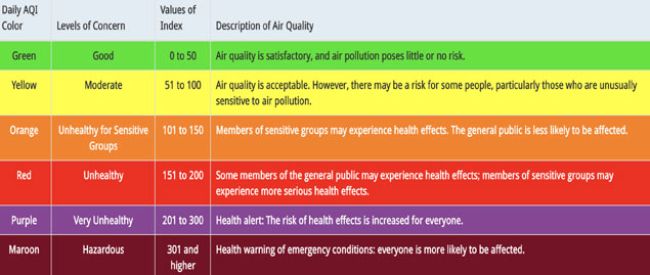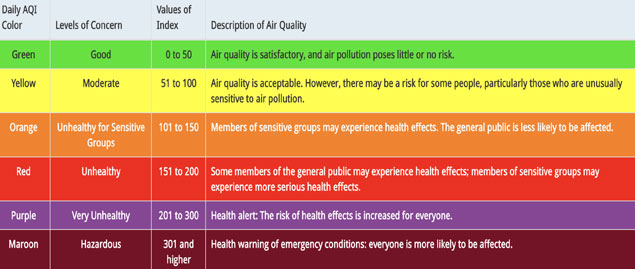
Mitigating the Risk of Wildfire Smoke
Wildfires have become increasingly common in recent years, and many lineworkers have found themselves working around these fires – and their aftermath – as part of their jobs. Because of the hazards that wildfires present, it’s critical that these workers understand how to protect themselves. This month’s Tailgate Topic will address the hazard of wildfire smoke.
Wildfire smoke is a mixture of small particles, gases and water vapor. The small particles are the primary health concern. The smallest particulate matter – and usually the most harmful – is called PM2.5 (solid particles and liquid droplets suspended in air with an aerodynamic diameter of 2.5 micrometers or smaller). This type of matter can cause burning eyes, runny noses, scratchy throats, headaches and illnesses (e.g., bronchitis). It also can worsen chronic heart and lung diseases, including asthma, emphysema and chronic obstructive pulmonary disease.
The air quality index (AQI) helps users determine if the air around them is at a safe level. It uses numbers to describe the quality of air and whether it poses a health risk. Air quality varies from area to area based on weather conditions, geography, pollution, wildfires and other factors. Following is an AQI table that describes levels of concern, index values and air quality itself.

When wildfire smoke affects a work site, employers must monitor the AQI for PM2.5. They can do so using the following websites:
Critical Observable Actions
Following are what my colleagues and I consider critical observable actions to mitigate the risk of wildfire smoke. Keep in mind that your employer and regulatory agencies may require additional mitigations. Please check with them before being exposed to this or any other hazard.
1. Know the AQI for your work area. Based on the chart above, you will know if your environment is hazardous to your health. Your employer also is obligated to inform you when the AQI for PM2.5 reaches 151 or higher.
2. If feasible, implement modifications to the workplace to reduce exposure. Examples include providing enclosed structures or vehicles for employees to work in, where the air is filtered.
3. Make practicable changes to your work procedures or schedules. This can include changing the location where your team works or reducing the amount of time they work outdoors or are exposed to unfiltered outdoor air.
4. Increase rest time and frequency. Provide a rest area with filtered air.
5. Reduce work intensity if possible. This helps to lower breathing and heart rates.
6. Consider respiratory protection, such as disposable respirators, when the AQI for PM2.5 is 151-499. Your employer should offer them to you. To filter out fine particles, respirators must be labeled N95, N99, N100, P95, P99, P100 or R95. They also must be labeled as approved by the U.S. National Institute for Occupational Safety and Health. Additionally, keep in mind that to be effective, your respirator must be properly fitted on a cleanshaven face or where facial hair does not interfere with the seal of the mask.
7. Use a respirator if the AQI for PM2.5 exceeds 500. Employers must ensure employees use respirators and implement a respiratory protection program; this is required in California per the state’s respiratory standard (see www.dir.ca.gov/title8/5144.html). Better yet, avoid working your crews when the AQI for PM2.5 exceeds 500. For most companies, an AQI above 500 shuts down activities altogether.
Conclusion
Wildfire smoke is a known hazard when wildfires are present in the area. It’s critical to monitor air quality, have mitigation plans in place and train your crews appropriately so they can keep themselves safe.
About the Author: Thomas Arnold, CSP, CUSP, has been a partner with Professional Safety Solutions LLC (ProSafe) since 2009. ProSafe works directly with utilities and utility contractors to optimize their safety management programs. In addition, ProSafe provides highly qualified field safety advisers for utility projects across the country. Arnold can be reached at tom@prosafellc.com.

